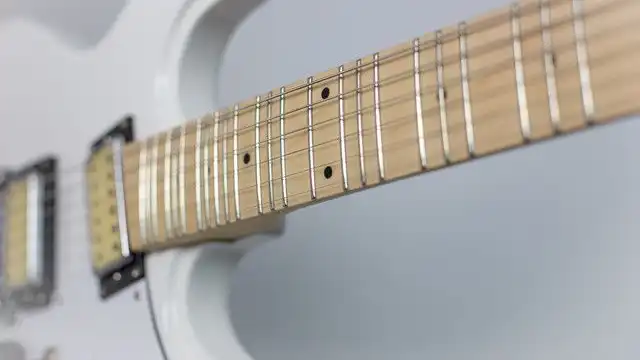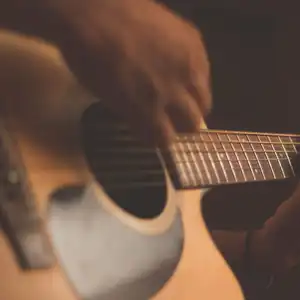Quarter Tone Guitar Tuning: How To Get More Notes With Less Cash


Buckle up, because today we're getting into something even weirder than your everyday alternate tuning—but from a global perspective, it's not quite as weird as it may seem. All over the world, there are incredible instruments that use scales totally different than ours, many of these instruments get these notes by having a very different fret system than we do.
On a guitar, you call the musical distance between the open string and the 12th fret an octave, this is why we can have two notes with the same name even though one is higher or lower in pitch than the other. Your high and low E strings, for example, are two octaves apart.
In America and other 'western' music theory countries, we split that octave into 12 even notes, we call these half steps or half-tones. That is why it takes 12 frets for a note to repeat on a guitar string, and why a standard piano features a 12 key pattern before it visually repeats itself.
Subscribe to Stringjoy on YouTube
What Are Quarter Tones?
Quarter Tones are what happens when you split those half-tones in half again. Now your 12 notes before a repeated note, the octave, become a 24 note octave. You might have heard some of these notes used in traditional and modern music from all over the Asian continent, from the Balkans, through the Middle East, India, and beyond.
In the world of guitar, there are fantastic innovators who reach for these notes with necks that feature extra or atypical fret placement such as Jon Catler and King Gizzard and The Lizard Wizard, or those who use necks with no frets at all such as Gabriel Marin and Lionel Loueke Investing in a new instrument on either side of that coin can get expensive, what are the rest of us to do if we just want to give these unique sounds a try? That is where Quarter Tone Tuning comes in.
What if each string had a partner string tuned a quarter step apart so that you have 12 tones on one and the other half on the other? You could hit all 24 tones in the octave between the two strings. The only problem is you would be stuck with the range you have on the E A & D strings which is pretty limited. To solve that problem, we took a page out of Robert Fripp's book of New Standard Tuning and went with a C - G - D fifths tuning to expand the range possible.
This leaves us with our Quarter Tone Tuning:
C - C quarter sharp - G - G quarter sharp - D - D quarter sharp
There are a lot of possibilities here that are definitely not for everyone, but if you've ever been curious about accessing those hard-to-reach notes, this is a super cool way to do it! You can finally explore Ivan Wyschnedgradsky's 24 quarter-tone piano etudes like you always wanted. We suggest picking the 3 notes you want, finding the right tension for them, and then getting strings one size smaller for their quarter sharp neighbors, You can get the set used in this video here.
To help with tuning, try out this neat online quarter-tone piano tuner.
It may all sound out of tune at first, it sure did for me, but in time you start to hear the harmonies and dissonances within. There are whole communities dedicated to exploring these Microtonal and Xenharmonic music styles, I definitely suggest digging into them online if you're interested - it is a world of fun.
Other Posts you may like

Guitar Strings Order: How the Guitar is Tuned and Why

Best Acoustic Guitar Strings for Beginners

Two Handed Tapping: Our Top 8 Tappers of All Time

Which Guitar Strings Wear Your Fret Wire Down More?

What is Nashville Tuning? Its History, Best Guitar Strings & Uses

Guitar Scale Length Explained: String Tension & Playability
0 Responses
Leave a Reply
Your email address will not be published. Required fields are marked *




